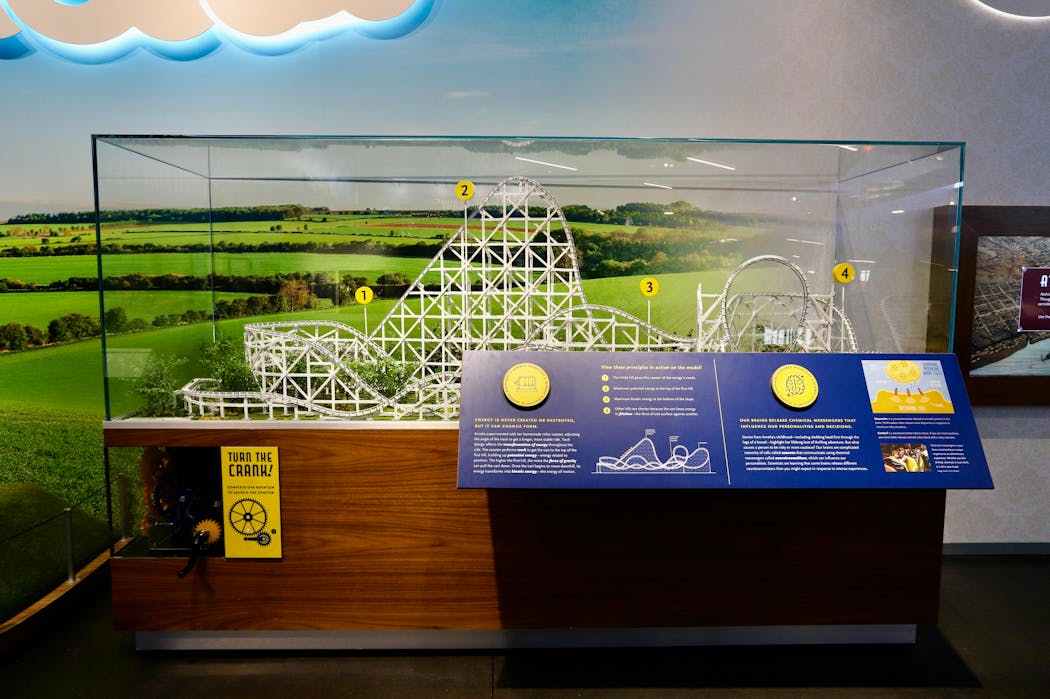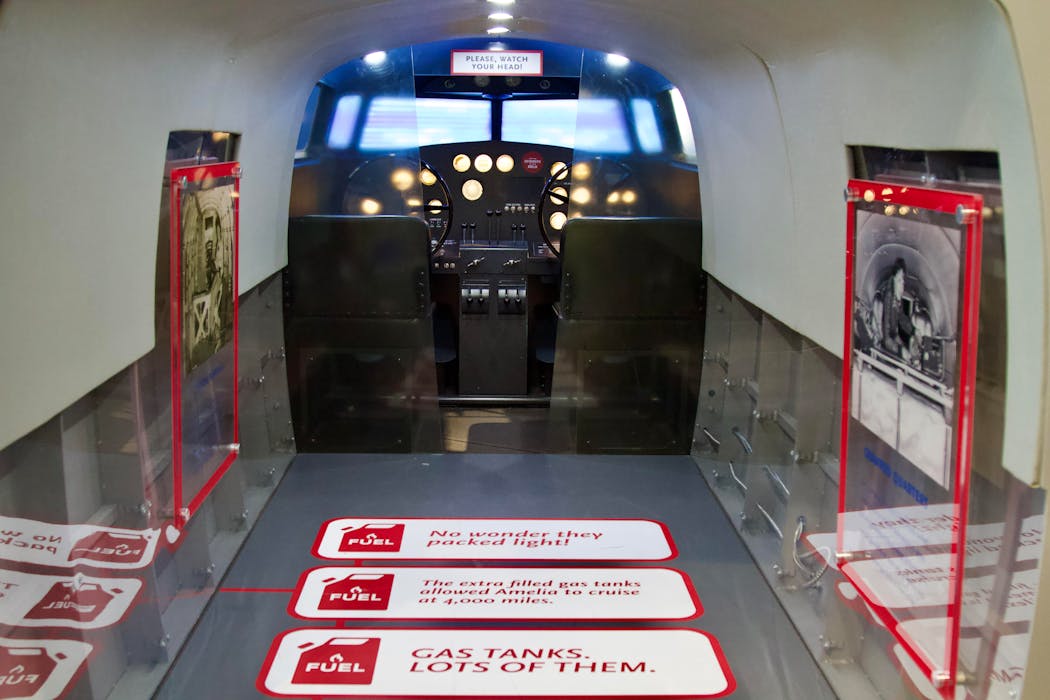A new Amelia Earhart museum takes off in her Midwestern birthplace
My landing was a little bumpy and I was just a wee bit off course, but hey, at least I didn't hit the farmhouse and the cows. I made it. Alive. I had just landed in a field near Londonderry, Northern Ireland, in May 1932.
Technically, I was in a flight simulator in Atchison, Kansas, birthplace of famed aviator Amelia Earhart — where a new museum at the small airport that bears her name celebrates her accomplishments. The simulator offers the opportunity to reenact several of Earhart's "first" flights, but I chose to become the first female to fly solo across the Atlantic.
"When dreams come true, they spark even bigger adventures," says Earhart in an eerily lifelike greeting as guests enter the Amelia Earhart Hangar Museum.
The focal point of the museum is "Muriel," a Lockheed Electra 10-E — the type of aircraft Earhart was flying when she and navigator Fred Noonan disappeared on a round-the-world mission in 1937. Named Muriel for Earhart's sister, it is the last aircraft of its kind in the world.
But the museum is not a debate about what happened on that fateful July night in the Pacific 86 years ago. Instead, Muriel is surrounded by 10 exhibits that shine a light on Earhart's milestones, the people who supported her and the skills that children and adults today should develop for similar success.
After seeing a roller coaster at the 1904 St. Louis World's Fair and being told they couldn't ride because they were girls, Amelia and Muriel Earhart built their own coaster-like contraption in their grandparents' back yard in Atchison. Amelia took the first run and lost control on the first curve, crashing a few yards away.
That roller coaster is the inspiration for an exhibit that highlights the science, technology, engineering and math skills (STEM) required to build a coaster. While using a hand crank to bring a roller-coaster car to the top of a climb, guests learn about the degree of slope needed to create the kinetic energy to push the car along the rest of the ride.
Then the exhibit considers the endorphins generated in our brains from an exhilarating coaster ride. Dopamine and cortisol are two that in abundance cause some people to want to ride over and over again.
Step into the cockpit
Because of its pricelessness, visitors may not get in or touch the Lockheed Electra. However, an identical cockpit that sits nearby allows visitors to experience the controls and conditions that Earhart managed.
If you think seats on commercial airlines are tight now, scramble into this pilot's seat. I'm 5 feet 6, 2 inches shorter than Earhart. Yet my knees smashed into the control panel and my head scraped the ceiling. She had to sit like this for up to 18 hours on one leg of the round-the-world flight. There's no place to stand up in the Lockheed Electra. Nor was there a bathroom.
While the STEM exhibits are designed for children's learning, gearheads will love an up-close look at the Pratt & Whitney Wasp R-1340 engine that was in both the Lockheed Electra and the red Vega that Earhart flew across the Atlantic.
Stand under a sound bubble and listen to that roar, compared with a modern aircraft engine. Then imagine listening to that roar for 15 hours or more. There were no noise-cancelling headphones back then.
When Earhart and Noonan were planning their round-the-world trip in the Electra, their most important cargo was additional fuel and navigational aids. There wasn't a lot of room for personal items, clothing and such. You can choose the items you feel you literally could not live without, then see how much they weigh and if the plane is going to get off the ground.
A portion of museum ceiling is a replica of the night sky, complete with constellations. Using a sextant, you can try to navigate a route such as the one Noonan attempted. It's not at all easy.
A couple of exhibits teach us about the strong women in Amelia's life and the scrapbook she kept of women who inspired her. Amelia's mother was the first woman to ride horseback to the top of Pike's Peak. When Amelia got her pilot's license in 1920, she was only the 14th woman to earn a license, yet her flight instructor was also a woman. Amelia was good friends with Eleanor Roosevelt, a champion of women's rights and accomplishments.
Also in Atchison
While in town, you'll also want to visit the Amelia Earhart Birthplace Museum and see that backyard roller coaster and other aspects of Amelia's life. Take a few minutes to stroll through the International Forest of Friendship, an arboretum created by members of the Ninety-Nines, a club for female aviators that Amelia helped found.
Just south of Atchison near Warnock Lake on Hwy. 7 is the Amelia Earhart Earthwork, a one-acre landscape portrait created for her 100th birthday in 1997.
The annual Amelia Earhart Festival on the third weekend in July celebrates her birthday on the 24th. In addition to food and festival activities, aviation authors and Earhart experts will be on hand to offer lively discussion on this hometown hero.
Getting there
Atchison, in northeastern Kansas, is about a six-hour drive from the Twin Cities and an hour north of Kansas City. Sun Country, Delta and Southwest offer nonstop flights from Minneapolis to K.C. for as little as $98 round-trip (on Sun Country).
Where to stay
Lodging options in Kansas City have exploded in recent years with the addition of the 800-room Loews Kansas City and boutique hotels such as the Crossroads Hotel in an old Pabst bottling facility, the 21c Museum Hotel and the Hotel Indigo.


